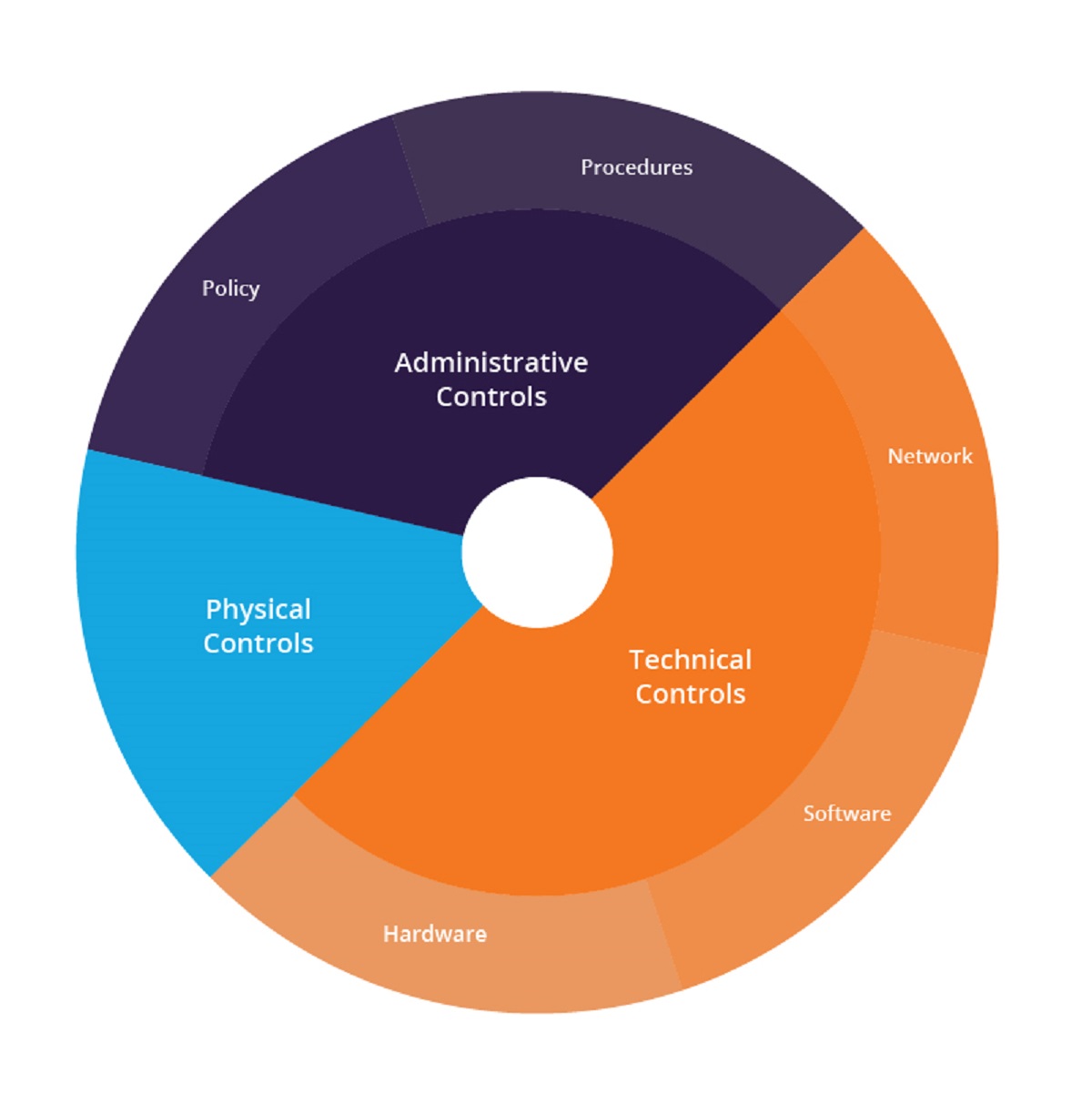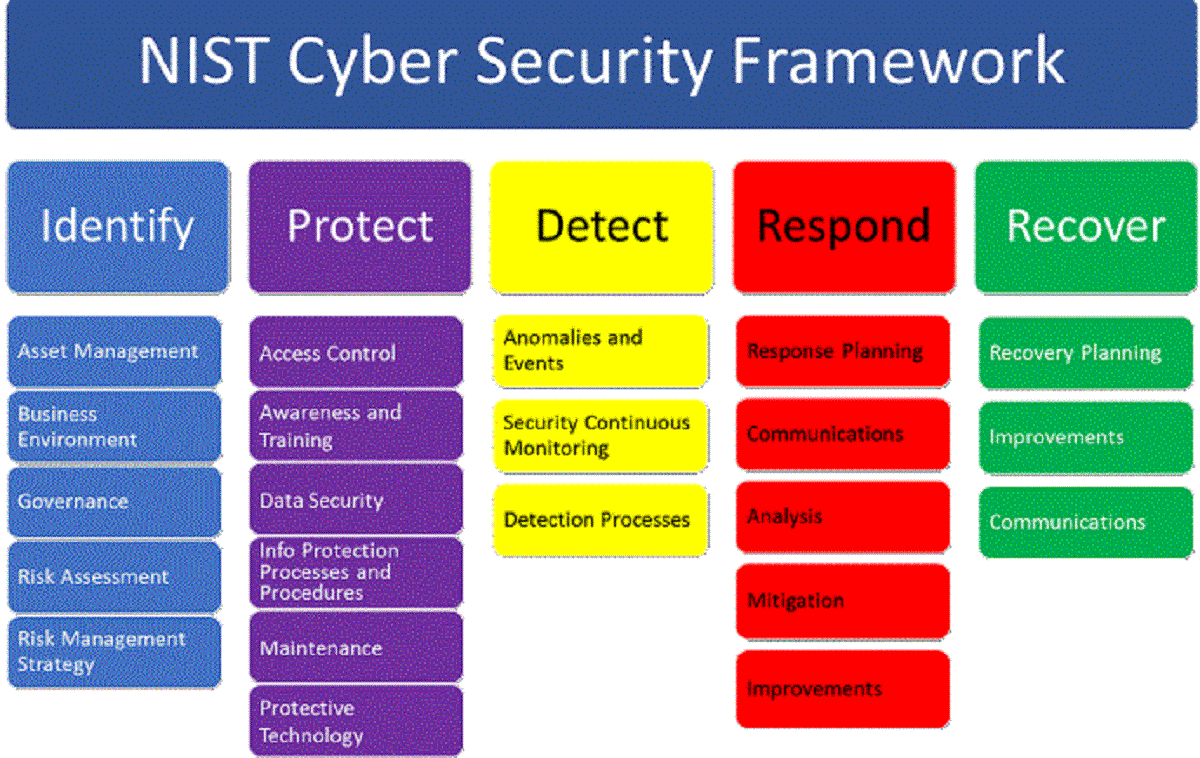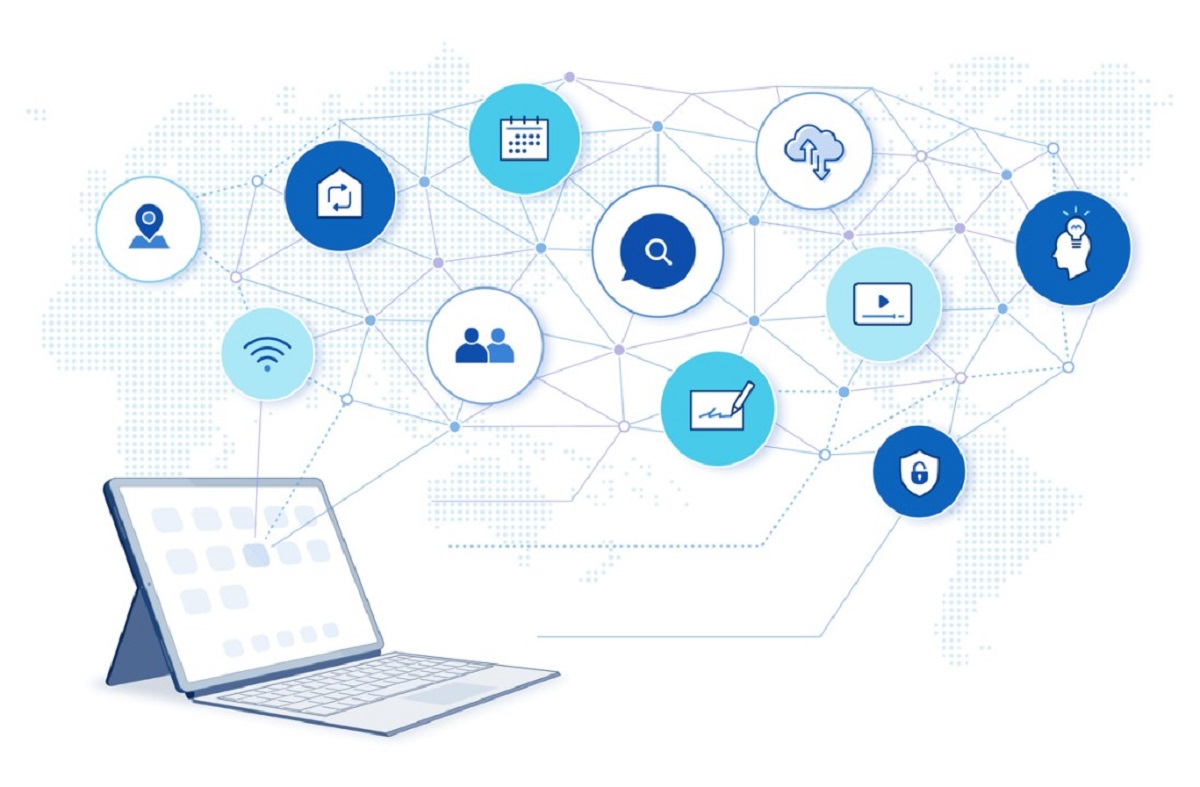Introduction
With the ever-increasing frequency and sophistication of cyber threats, securing sensitive information and protecting digital assets has become a top priority for organizations. One of the most effective strategies in the field of cybersecurity is defense in depth. This approach involves deploying multiple layers of security controls to create a robust and resilient defense system.
Defense in depth is a proactive and comprehensive approach that goes beyond relying on a single security measure, such as a firewall or antivirus software. It recognizes that no single security solution can provide complete protection against all types of threats. Instead, it advocates for a layered approach that combines various security measures to provide strong and overlapping protection across different areas of the network.
This concept draws inspiration from military strategy, where multiple layers of defense mechanisms are utilized to safeguard a valuable resource. Similarly, in the realm of cybersecurity, defense in depth aims to create multiple layers of protection that work together to deter, detect, and mitigate potential threats.
By implementing a defense in depth approach, organizations can significantly enhance their cybersecurity posture and reduce the risk of successful cyber attacks. This approach ensures that even if one layer of defense is breached, there are other layers in place to prevent the attack from reaching critical systems or compromising sensitive data.
In this article, we will explore the core principles of defense in depth cybersecurity, delve into the five layers of defense, discuss the benefits and challenges of implementing this strategy, and highlight best practices for successful implementation.
What is Defense in Depth Cybersecurity?
Defense in depth cybersecurity is a layered approach that aims to protect digital assets and sensitive information by deploying multiple defensive measures. It recognizes that relying on a single security solution is not enough to effectively combat the wide range of cyber threats that organizations face today.
This approach involves implementing multiple layers of security controls across different levels of a network infrastructure, creating a complex and interconnected defense system. Each layer provides a unique set of security measures and acts as a barrier, making it more challenging for attackers to breach the system and gain unauthorized access.
By establishing a multilayered defense strategy, organizations can ensure that even if one layer is compromised, there are other layers in place to prevent further damage. This not only increases the overall security of the network but also allows for early detection and rapid response to potential threats.
The fundamental principle of defense in depth is to provide overlapping layers of security controls that complement each other to create a robust defense system. These layers of defense can include perimeter security, network security, endpoint security, application security, and data security.
It is important to note that defense in depth does not imply duplicating the exact same security measure at each layer. Instead, it involves implementing a combination of different security controls to cover various aspects of cybersecurity.
By adopting a defense in depth approach, organizations can effectively mitigate the risk of successful cyber attacks and reduce the potential impact of security breaches. This integrated strategy ensures that even if one layer fails to prevent an attack, other layers are in place to detect and respond to the threat.
In the next sections, we will explore each layer of defense in depth in more detail, discussing the specific security measures and technologies employed at each level, as well as the benefits and challenges associated with implementing this approach.
The Five Layers of Defense in Depth
Defense in depth cybersecurity is implemented through five layers of security controls, each providing a unique level of protection and working together to create a robust defense system. Let’s explore each layer in detail:
Layer 1: Perimeter Security
The first layer of defense is perimeter security, which focuses on protecting the outermost layer of an organization’s network. This includes deploying firewalls, intrusion prevention systems, and secure gateways to monitor and control incoming and outgoing network traffic. Perimeter security helps prevent unauthorized access and filters out potential threats before they can reach the internal network.
Layer 2: Network Security
The second layer of defense is network security, which involves securing the internal network infrastructure. This can be achieved through technologies such as network segmentation, virtual private networks (VPNs), and network access controls. Network security ensures that even if an attacker manages to breach the perimeter, they face additional barriers within the network, limiting their ability to move laterally and access sensitive data.
Layer 3: Endpoint Security
The third layer focuses on endpoint security, which involves securing individual devices and endpoints, such as laptops, desktops, and mobile devices. Endpoint security measures include antivirus software, endpoint protection platforms, and host-based firewalls. This layer protects against malware, ransomware, and other threats that target specific devices or exploit vulnerabilities in endpoint software.
Layer 4: Application Security
The fourth layer of defense is application security, which focuses on securing the software and applications used within an organization. This includes conducting secure coding practices, performing regular vulnerability assessments, and implementing web application firewalls. Application security helps prevent common threats such as SQL injection, cross-site scripting (XSS), and remote code execution by ensuring that applications are robust and free from vulnerabilities.
Layer 5: Data Security
The final layer is data security, which is concerned with protecting sensitive data from unauthorized access, loss, or theft. This involves implementing strong encryption protocols, access controls, and data loss prevention (DLP) solutions. Data security ensures that even if an attacker manages to bypass previous layers of defense, they are unable to access or manipulate valuable data.
By implementing these five layers of defense in depth, organizations create a comprehensive and resilient defense system that strengthens their overall cybersecurity posture. Each layer adds an additional barrier and provides a specific set of security measures, making it increasingly difficult for attackers to compromise the network or access sensitive information.
Layer 1: Perimeter Security
The first layer of defense in depth cybersecurity is perimeter security. This layer focuses on securing the outermost layer of an organization’s network, acting as the first line of defense against potential threats. Perimeter security aims to prevent unauthorized access and filter out potentially malicious traffic before it reaches the internal network.
Perimeter security measures typically include the use of firewalls, intrusion prevention systems (IPS), and secure gateways. These technologies work together to monitor, control, and filter network traffic based on predefined security policies.
Firewalls act as a barrier between an organization’s internal network and the external network, such as the internet. They analyze inbound and outbound traffic, allowing or denying access based on predetermined rules. Firewalls can be either hardware or software-based and can be configured to examine packet headers, protocol types, and port numbers to make access control decisions.
Intrusion prevention systems (IPS) provide an additional layer of security by analyzing network traffic in real-time and identifying and blocking malicious activity. IPS can detect and prevent common attacks, such as network-based intrusions, distributed denial-of-service (DDoS) attacks, and port scanning attempts.
Secure gateways, such as secure email gateways or web application firewalls, are another essential component of perimeter security. They inspect incoming and outgoing traffic, scanning for potential threats, malware, or suspicious content. Secure gateways apply content filtering and enforce security policies to ensure that only legitimate and safe data passes through.
Perimeter security plays a critical role in preventing direct attacks against an organization’s network infrastructure. By establishing this first layer of defense, organizations can significantly reduce the risk of unauthorized access and the potential for malicious activities that could compromise the entire network.
However, it is important to note that the effectiveness of perimeter security alone is limited. As cyber threats continue to evolve, attackers find new ways to bypass traditional perimeter defenses. Therefore, organizations must not solely rely on perimeter security but implement additional layers of defense to create a comprehensive defense-in-depth strategy.
In the next section, we will discuss the second layer of defense-in-depth security, focusing on network security and the measures taken to secure the internal network infrastructure.
Layer 2: Network Security
The second layer of defense in depth cybersecurity is network security. While perimeter security establishes the first line of defense by protecting the outermost layer of the network, network security focuses on securing the internal network infrastructure.
Network security measures aim to prevent unauthorized access, detect and mitigate potential threats, and ensure the confidentiality, integrity, and availability of network resources. This layer of defense helps limit lateral movement and restricts access to sensitive data within the network.
A key component of network security is network segmentation, which involves dividing a network into separate subnetworks or segments. Each segment has its own security policies, creating barriers that prevent unauthorized movement between segments. By segregating the network into smaller, more manageable segments, organizations can contain potential threats and limit the impact of a security breach.
Virtual private networks (VPNs) are another crucial element of network security. VPNs create a secure, encrypted connection over the public internet, allowing remote users to access the organization’s internal network securely. They ensure that data transmitted over the network is protected from interception and eavesdropping, even when accessed from external locations.
Network access control (NAC) systems also play a vital role in network security. NAC solutions enforce security policies, ensuring that only authorized users and devices can access the network. By authenticating and authorizing users and devices, NAC helps prevent unauthorized access and mitigates the risk of insider threats.
Intrusion detection systems (IDS) and intrusion prevention systems (IPS) are deployed at the network level to monitor and analyze network traffic for signs of suspicious or malicious activity. IDS detects potential threats, while IPS takes immediate action to block or prevent malicious traffic from reaching its intended destination.
By implementing these network security measures, organizations enhance their ability to detect and respond to potential threats within their internal network. This layer of defense complements perimeter security by providing additional barriers and control points that help prevent lateral movement and mitigate the impact of a security incident.
In the next section, we will explore the third layer of defense in depth cybersecurity – the essential layer of endpoint security.
Layer 3: Endpoint Security
The third layer of defense in depth cybersecurity is endpoint security. While perimeter security focuses on securing the network perimeter and network security aims to protect the internal network infrastructure, endpoint security is concerned with securing individual devices and endpoints, such as laptops, desktops, smartphones, and tablets.
Endpoint security is critical because these devices often serve as entry points for cyber attacks. By targeting endpoints, attackers can gain unauthorized access to the network, compromise sensitive data, or introduce malware into the system. Therefore, it is crucial to implement robust endpoint security measures to protect against a wide range of threats.
Antivirus software is a fundamental component of endpoint security. It scans files and programs on endpoints for known malicious patterns or behavior, and if detected, it takes appropriate action to prevent infection or further damage. Antivirus solutions are regularly updated with new virus signatures to ensure protection against the latest threats.
Endpoint protection platforms (EPPs) provide a broader range of security measures to safeguard endpoints. EPPs combine antivirus capabilities with features like host-based firewalls, intrusion prevention systems (IPS), and data loss prevention (DLP). These solutions protect against malware, prevent unauthorized access, and help prevent the exfiltration of sensitive data.
Endpoint security measures also include patch management procedures. Regularly applying software updates and patches helps address vulnerabilities and software weaknesses that could be exploited by attackers. Additionally, implementing strong endpoint security policies, such as restricting administrative privileges and enforcing secure password requirements, can further enhance the security of individual devices.
Another emerging aspect of endpoint security is endpoint detection and response (EDR) solutions. EDR tools provide real-time monitoring, threat detection, and rapid response capabilities. They can detect and investigate suspicious activities, provide insights into the attack timeline, and enable quicker incident response and remediation.
Endpoint security is crucial as it protects the devices and endpoints that directly interact with critical data and systems. By implementing robust endpoint security measures, organizations can effectively mitigate a wide range of endpoint-related threats and minimize the risk of successful cyber attacks.
In the next section, we will explore the fourth layer of defense in depth cybersecurity – application security. This layer focuses on securing the software and applications used within an organization.
Layer 4: Application Security
The fourth layer of defense in depth cybersecurity is application security. This layer focuses on securing the software and applications used within an organization. Applications, whether web-based or standalone, are a common target for attackers seeking to exploit vulnerabilities and gain unauthorized access to systems or sensitive data.
Application security involves implementing measures to ensure that applications are designed, developed, and deployed securely. This includes following secure coding practices, performing regular vulnerability assessments, and implementing various security controls to protect against common application-level attacks.
Secure coding practices are essential to building applications with security in mind from the start. This includes adhering to coding standards, using secure libraries and frameworks, and applying input validation and output encoding to prevent common vulnerabilities like SQL injection, cross-site scripting (XSS), and remote code execution.
Regular vulnerability assessments and penetration testing help identify weaknesses and vulnerabilities in applications. By conducting these assessments, organizations can proactively identify and address potential areas of weakness that could be exploited by attackers.
Web application firewalls (WAFs) are another crucial element of application security. WAFs are designed to protect web applications from a variety of attacks, including SQL injection, cross-site scripting, and application-layer DDoS attacks. These solutions analyze incoming traffic to web applications and apply predefined security rules to block malicious and suspicious activity.
Authentication and authorization mechanisms are also important aspects of application security. Implementing strong authentication methods, such as multi-factor authentication (MFA), helps ensure that only authorized individuals can access applications and sensitive data. Role-based access control (RBAC) and fine-grained access controls further restrict user permissions and limit potential damage in the event of a breach.
Secure application development life cycle practices, such as conducting security code reviews and performing static and dynamic application security testing (SAST and DAST), are critical for identifying and mitigating vulnerabilities early in the development process.
By implementing robust application security measures, organizations can protect their applications from common vulnerabilities and reduce the risk of successful attacks. This layer of defense in depth cybersecurity ensures that applications are resilient against exploitation, safeguarding both the organization’s data and the users who interact with those applications.
In the next section, we will explore the fifth and final layer of defense in depth cybersecurity – data security. This layer focuses on protecting sensitive data from unauthorized access and ensuring its confidentiality and integrity.
Layer 5: Data Security
The fifth and final layer of defense in depth cybersecurity is data security. This layer focuses on protecting sensitive data from unauthorized access, ensuring its confidentiality, integrity, and availability. Data is the lifeblood of organizations, and its protection is of utmost importance.
Data security involves implementing robust measures to safeguard against unauthorized access, loss, or theft of sensitive information. This layer of defense ensures that even if other layers are compromised, sensitive data remains protected.
Encryption is a fundamental technique used in data security. By encrypting data at rest and in transit, organizations can ensure that even if it falls into the wrong hands, it remains unreadable and unusable. Strong encryption algorithms and encryption key management practices are essential to maintaining the security of encrypted data.
Access controls and authentication mechanisms play a critical role in data security. By implementing role-based access control (RBAC) and fine-grained access controls, organizations can ensure that only authorized individuals or systems can access sensitive data. Multi-factor authentication (MFA) adds an extra layer of security by requiring users to provide multiple forms of verification before accessing data.
Data loss prevention (DLP) solutions can help prevent unauthorized data exfiltration. These solutions monitor and detect outgoing network traffic, identifying sensitive data and applying policies to prevent it from leaving the organization’s network without proper authorization. DLP solutions can also help in detecting and blocking attempts to copy, print, or transmit sensitive information.
Data backups and disaster recovery plans are crucial components of data security. Regularly backing up data and storing backups in secure offsite locations ensures that data can be recovered in the event of a breach or system failure. Disaster recovery plans outline the steps to be followed to restore data and systems after a disruptive event.
Awareness and training programs are also important in data security. Educating employees about the importance of data security, best practices for handling sensitive data, and recognizing potential threats can help prevent accidental data breaches and enhance the overall security posture of an organization.
By implementing strong data security measures, organizations can protect their most valuable asset – their data. This layer of defense ensures that even if other layers are breached, sensitive information remains secure and inaccessible to unauthorized individuals.
In the next section, we will discuss the benefits and advantages of implementing a defense in depth cybersecurity strategy, as well as the challenges and considerations organizations may face.
Benefits of Defense in Depth Cybersecurity
Implementing a defense in depth cybersecurity strategy offers numerous benefits to organizations in terms of enhanced protection, resilience, and risk mitigation. Let’s explore some of the key advantages of adopting this approach:
1. Comprehensive Protection:
Defense in depth provides a holistic and layered approach to security, ensuring that multiple barriers are in place to deter and block potential threats. This strategy covers a wide range of attack vectors and vulnerabilities, mitigating the risk of successful cyber attacks.
2. Reduces Risk of Unauthorized Access:
By implementing multiple layers of defense, organizations reduce the risk of unauthorized access to their networks and systems. Even if one layer is breached, other layers are in place to minimize the potential impact and prevent further infiltration.
3. Early Detection and Response:
A defense in depth approach enables early detection of potential security breaches. With various security measures deployed at different stages, organizations have improved visibility into potential threats and can respond quickly to mitigate the impact.
4. Resilience and Continuity:
Layered security measures make organizations more resilient against cyber attacks and disruptions. In the event of a breach or an incident, recovery and restoration can be streamlined through backup systems, disaster recovery plans, and the ability to isolate affected areas of the network.
5. Protection of Sensitive Data:
Defense in depth emphasizes data security by implementing encryption, access controls, and data loss prevention measures. This ensures the confidentiality and integrity of sensitive data, reducing the risk of data breaches and unauthorized disclosure.
6. Compliance and Regulatory Requirements:
A defense in depth approach aligns with many industry regulations and compliance standards. By implementing appropriate security controls across multiple layers, organizations can meet the requirements set forth by regulatory bodies more effectively.
7. Improved Business Reputation:
Implementing strong cybersecurity practices through defense in depth enhances an organization’s reputation as a trusted and secure entity. This instills confidence in customers, partners, and stakeholders, potentially leading to new business opportunities and competitive advantage.
Overall, defense in depth cybersecurity provides a robust and layered approach to protect organizations from constantly evolving cyber threats. By deploying multiple security measures, organizations can mitigate risks, reduce potential damage, and ensure the continued operation and security of their critical systems and data.
Challenges and Considerations
While implementing a defense in depth cybersecurity strategy offers significant benefits, organizations must also be aware of the challenges and considerations involved. Let’s explore some of the key challenges and factors to consider:
1. Complexity:
Implementing multiple layers of security controls can introduce complexity, both in terms of configuration and management. Organizations need to ensure that all layers work cohesively and that updates or changes in one layer do not inadvertently impact the effectiveness of other layers.
2. Cost:
Deploying and maintaining multiple layers of security measures can incur significant costs. Organizations must carefully assess their budget and allocate resources accordingly to ensure the effectiveness of the defense in depth strategy without compromising other business operations.
3. Interoperability and Compatibility:
The different security solutions and technologies implemented across various layers of defense need to be compatible and able to integrate seamlessly. Ensuring interoperability and smooth communication between different security tools and systems is crucial for a cohesive and effective defense in depth approach.
4. Training and Expertise:
Managing a defense in depth strategy requires well-trained and knowledgeable cybersecurity professionals. Organizations need to invest in training and ongoing professional development to ensure that their staff has the necessary skills to monitor, manage, and respond to security incidents across multiple layers of defense.
5. False Positives and Alert Overload:
With multiple security measures at various layers, organizations may face the challenge of managing an overwhelming number of alerts and false positive notifications. This can lead to alert fatigue and potentially overlook genuine threats. Organizations need to develop effective processes and tools to prioritize and respond to security incidents efficiently.
6. Third-Party Dependencies:
Organizations often rely on third-party vendors for various security solutions and services. It is crucial to assess the security capabilities, reputation, and reliability of these vendors to ensure that the defense in depth strategy is not compromised by vulnerabilities introduced through external dependencies.
7. Regular Updates and Maintenance:
To maintain the effectiveness of a defense in depth strategy, organizations need to consistently update and patch security solutions, review and adapt security policies, and monitor emerging threats. Regular maintenance and proactive measures are essential to address vulnerabilities and evolving attack techniques.
By considering these challenges and taking the necessary precautions, organizations can effectively address potential roadblocks and ensure the successful implementation and management of a defense in depth cybersecurity strategy.
Best Practices for Implementing Defense in Depth
Implementing a defense in depth cybersecurity strategy requires careful planning and execution. To maximize the effectiveness of this approach, organizations should consider the following best practices:
1. Conduct a Risk Assessment:
Start by conducting a thorough risk assessment to identify potential vulnerabilities, threats, and risks specific to your organization. This assessment will serve as the foundation for developing an effective defense in depth strategy tailored to your unique security requirements.
2. Define Security Policies:
Establish clear security policies that outline roles and responsibilities, acceptable use of technology, incident response procedures, and data handling guidelines. These policies should align with industry standards and compliance regulations.
3. Establish Strong Perimeter Security:
Implement robust perimeter security measures, including firewalls, intrusion prevention systems (IPS), and secure gateways. Regularly update and monitor these security controls to ensure their effectiveness in blocking unauthorized access and filtering potentially malicious traffic.
4. Implement Network Segmentation:
Segment your network into smaller, isolated segments to limit the impact of a security breach and prevent lateral movement by attackers. Implement strict access controls between network segments to restrict unauthorized access.
5. Strengthen Endpoint Security:
Employ strong endpoint security measures, such as antivirus software, endpoint protection platforms (EPPs), and regular patch management. Educate employees on best practices for endpoint security, including safe browsing habits and avoiding suspicious email attachments or downloads.
6. Emphasize Application Security:
Implement secure coding practices, perform regular vulnerability assessments, and use web application firewalls (WAFs) to protect against common application-layer attacks. Conduct thorough testing to identify and fix vulnerabilities before applications are deployed.
7. Prioritize Data Security:
Encrypt sensitive data at rest and in transit, implement strong access controls and authentication mechanisms, and employ data loss prevention (DLP) solutions to prevent unauthorized data exfiltration. Regularly back up data and test the effectiveness of disaster recovery plans.
8. Monitor and Respond:
Implement robust monitoring and incident response capabilities across all layers of defense. Use security information and event management (SIEM) systems to detect and respond to potential threats. Continuously monitor networks, systems, and endpoints for signs of suspicious activity.
9. Provide Ongoing Training and Awareness:
Train employees on best practices for cybersecurity and create a culture of security awareness within the organization. Regularly provide updates and training on emerging threats, phishing scams, and safe computing practices.
10. Regularly Assess and Update:
Perform regular security assessments, vulnerability scans, and penetration tests to identify weaknesses and assess the effectiveness of the defense in depth strategy. Regularly update security controls, policies, and procedures to address emerging threats and vulnerabilities.
By following these best practices, organizations can build a strong defense in depth cybersecurity strategy that protects against evolving cyber threats and reduces the risk of successful attacks.
Conclusion
Defense in depth cybersecurity is an essential strategy for organizations seeking to protect their digital assets and sensitive information. By implementing multiple layers of security controls, organizations can create a robust and resilient defense system that enhances their cybersecurity posture.
In this article, we explored the concept of defense in depth and its five layers: perimeter security, network security, endpoint security, application security, and data security. We discussed the benefits of this approach, including comprehensive protection, early threat detection and response, and enhanced data security.
However, it is important to acknowledge the challenges involved in implementing a defense in depth strategy. Complexity, cost, interoperability, and the need for well-trained cybersecurity professionals are among the factors organizations must consider. By addressing these challenges and following best practices, organizations can maximize the effectiveness of their defense in depth strategy.
Key best practices include conducting risk assessments, defining security policies, strengthening perimeter and network security, emphasizing endpoint and application security, prioritizing data security, implementing monitoring and incident response capabilities, providing ongoing training and awareness, and regularly assessing and updating security measures.
In today’s evolving threat landscape, it is crucial for organizations to adopt a proactive and comprehensive approach to cybersecurity. Defense in depth provides the necessary layers of protection to mitigate risks and reduce the impact of cyber attacks.
By implementing a robust defense in depth strategy and continually adapting to emerging threats, organizations can safeguard their critical assets, maintain customer trust, and ensure the longevity and success of their business operations in the digital age.

























